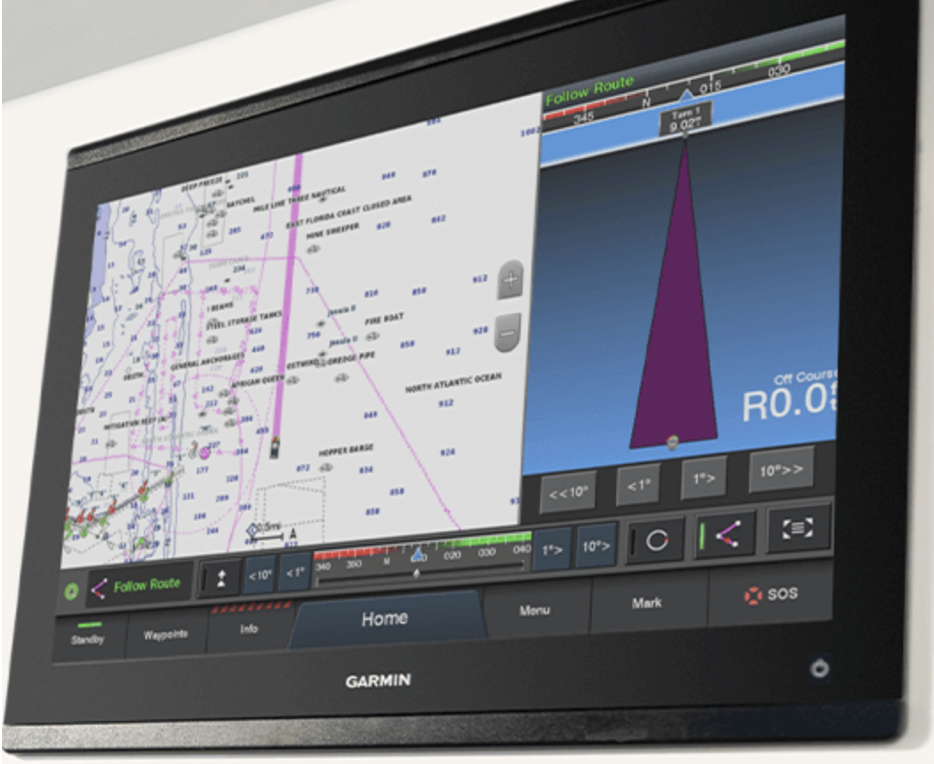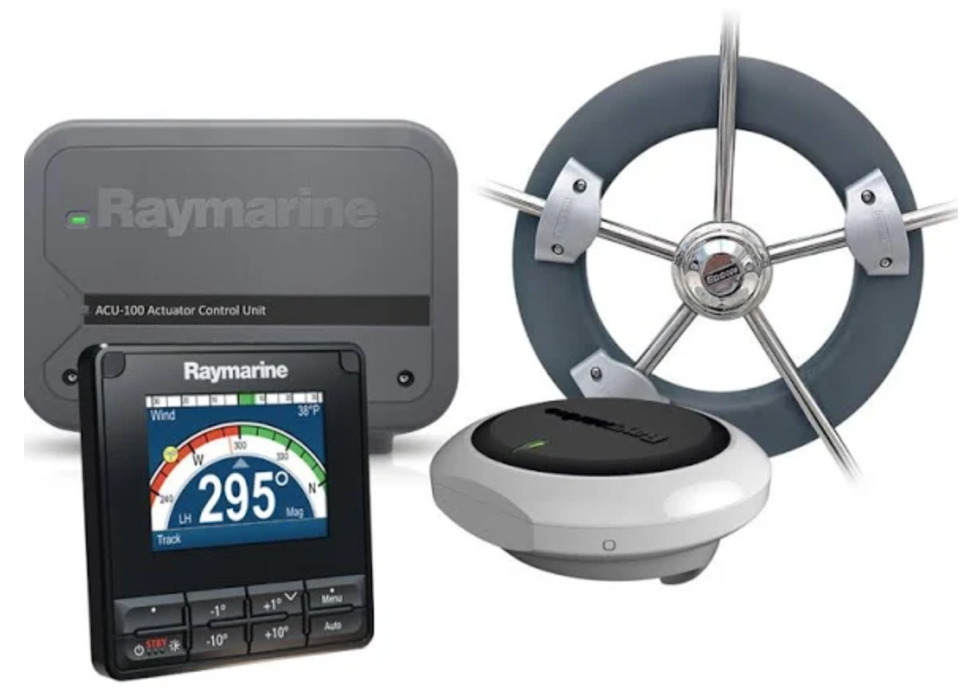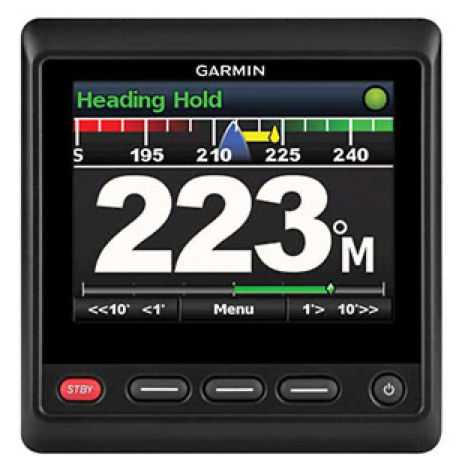Choosing An Autopilot, Part 2: What’s Right for Your Boat?

We reviewed the need for an autopilot on many boats and the components of most systems in Part 1. Here’s more information on choosing a system that will best suit your boat.
Choosing an Autopilot
While you can choose various types of dedicated controllers, including remote hand-held units, control via your MFD or even control through a smart-watch or smart phone, your boat’s power system, size and steering system pretty much dictate your choice of autopilots.
Simrad has a useful online guide to selecting an autopilot. See it here: https://www.simrad-yachting.com/globalassets/simrad/uns/simrad-autopilot-guide_2021_us_new.pdf
The process breaks down into four simple steps:
- Select a drive unit compatible with your boat’s steering system.
- Choose a rudder feedback unit. (Not needed on some systems with sensors)
- Select the autopilot computer that matches your drive unit.
- Choose how you want to control your autopilot system — select a dedicated controller or a multifunction display with full autopilot integration.
Commissioning and Calibration
All autopilots require commissioning and calibration, usually at dockside and when underway. However, the new class of autopilot systems has mostly taken the work out of this chore, performing much of it automatically. Just be sure to follow the fine-tuning instructions carefully if you’re a DIY installer — or have your marine professional give the system a final once-over.

Autopilot operation is simple: put the vessel on the desired heading, hold the course for a few seconds, press AUTO and release the helm. The autopilot will lock the course in memory and will respond with helm corrections to keep your boat on this course.
If you need to take the helm, press STANDBY and pretty much immediately on modern systems, you have control.
Press AUTO again and the system again takes over.
Modern autopilots have various methods of maintaining a more accurate course than their predecessors, such as auto-trim, auto sea-state and integration with GPS.
The latest developments include SmartSteer software algorithms from Raymarine that use a rate gyroscope to more accurately detect off-course deviations and an algorithm that learns your boat’s handling characteristics to improve steering over time.
Cockpit Mounted Autopilots

These are less expensive and easier to install than others but they are also more subject to damage and early failure than those located safely below-decks. However, the relatively low cost means you can possibly buy a backup to carry on long passages to remote areas.
Dependability
If you’re a passage-maker, buying with an eye to long-term dependability and reparability is paramount. Products that have service centers in ports worldwide, or at least in your common destinations, should be a consideration in your choice of equipment.
Common reasons for failure include saltwater intrusion in the central processing unit, water in the drive motor and corrosion in the power supply socket. Protecting the components from exposure can go a long way towards avoiding these problems.
The Right Size Autopilot
How can you estimate the limits and correctly size your autopilot?
Boat design, length and displacement are critical. In general, long, narrow boats, boats with V-shaped forward sections and long-keeled sailboats are more directionally stable.
To purchase a correctly sized autopilot, start with manufacturer’s recommendations. If your boat is near the upper limit of the manufacturer’s recommendations, especially in displacement, go up one size. Remember that your boat’s displacement will increase considerably when loaded for cruising and with multiple crew aboard.

Cautions
An autopilot has no brain, no conscience and no fear. It will happily run you into channel markers, rocks and even other boats if you depend on it for steering without constant monitoring.
It will also leave you behind if you fall overboard with no one at the helm. Wear a lanyard or get a radio controlled man-overboard stop system if you boat or fish alone.

Using Your Autopilot Safely
- Be sure that all the members of your crew know how to disengage the autopilot (by pressing the red STANDBY key on most control units, but knowing where this is on an MFD is not so obvious to untrained crew.)
- Be aware that any autopilot can fail, possibly at the most inconvenient time such as when you are inside a narrow channel.
- Autopilots can be subject to interference from other transmitting electronics, which could make your boat execute an alteration in course.
- Never put your boat under autopilot control in a situation that could rapidly become dangerous should the autopilot stop functioning.
- Always keep a proper watch so you can respond to unexpected situations.
Learn more about currently available autopilot systems here:
- B & G: www.bandg.com
- Furuno: www.furuno.com
- Garmin: www.garmin.com
- Lowrance: www.lowrance.com
- Raymarine: www.raymarine.com
- Simrad: www.simrad-yachting.com